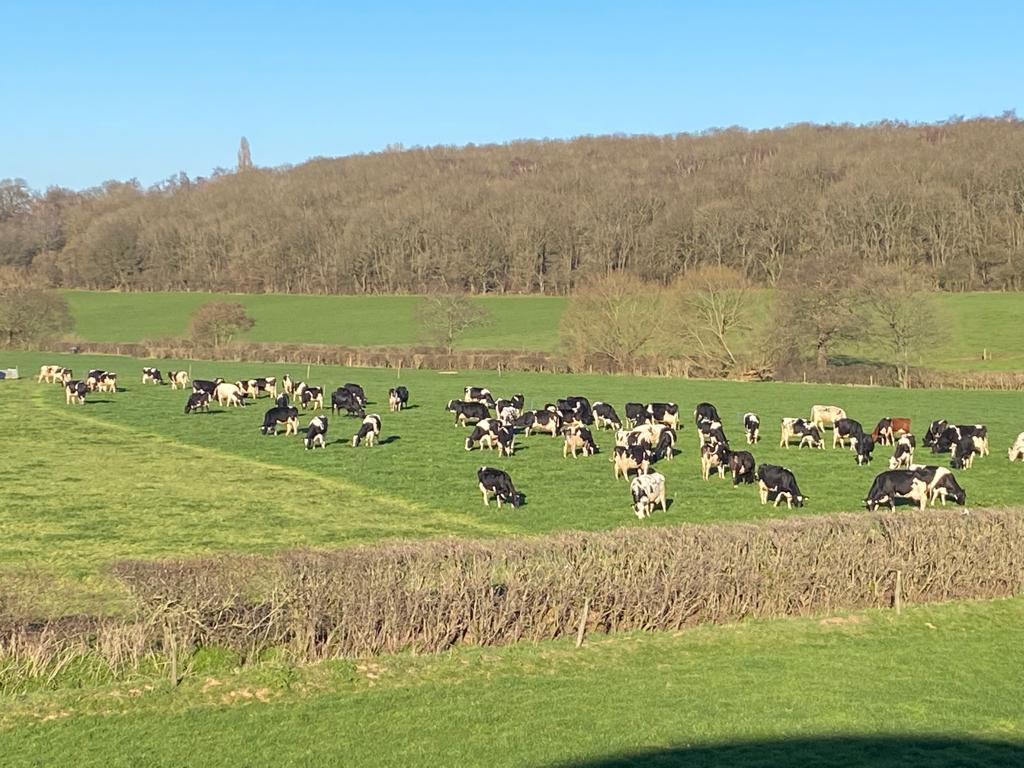- Home
- Knowledge library
- Meet the Forage for Knowledge contributors - Apie Pieterse
Meet the Forage for Knowledge contributors - Apie Pieterse
Meet the contributors
South African Apie Pieterse manages a split-block herd in Nottinghamshire where he has not only learned rotational grazing from scratch, but also honed his skills on heavy land in a dry area.
The business
Dean Hall Farm is owned by Michael Arlington and part of a business that includes five other dairy farms. Apie manages this split-block herd with a team of five staff.
The farm
Altitude: 19m
Annual rainfall: 650mm
Soils: heavy
164 ha platform
Reasonably flat
Housing system: cubicles and straw yard
Parlour type: 24/48
The cows
180 spring block calvers plus 300 calving July – October to optimise the milk contract. The spring block produces 6,500 litres or 510 kgMS and the summer group 7,900 litres or 610 kgMS.
Breeding since 2014 has been based on the Irish Holstein cow of 600–650kg, without losing milk. Aim is for cows to milk from grass and respond when fed a TMR.
Target concentrate 1,100 kg/cow.
What’s the grazing season been like this year?
“Fantastic so far. We’ve had good rates in the 80s this year, but there is no rain forecast,” says Apie. Turnout was on target in mid-February with good ground conditions. Having managed the farm for 10 years, the biggest thing he has learnt, however, is where he can and can’t graze in spring when it’s wet.
“We have set up the infrastructure of tracks and gateways to do it. We can get 4–6 kgDM/cow intakes in 3–4 hours then bring them back. I don’t struggle with on-off grazing because what drives me is reducing concentrates without affecting milk yield. It’s not easy though. It’s a fine balance between grazing grass and feeding in the trough.”
How much can you grow?
“Our average for the past seven years is 11.25 tDM/ha. We utilise more than 9 tDM/ha and consistently produce 4,500 litres from forage.”
In a drought, average yield dropped to 9.4 tDM/ha and peaked at 12.96 tDM/ha in a bumper year. The range across the paddocks is 8 tDM/ha from an arable conversion to 15.5 t on a longer-term ley. The worst grass field produces 10.5 tDM/ha and Apie believes the difference lies in soil condition and organic matter. Some paddocks have also grown standing hay for dry cow feed and haven’t recovered quickly.
What does sampling grass tell you?
“It’s surprising how quickly protein levels can change especially in June and July when grass is heading. In one week we can go from 24% CP to 16% CP. We wouldn’t know this if we didn’t sample. This year I’m also going to test nitrogen levels in grass before cutting silage to get an idea of uptake and what might be left – I will consider leaving grass for another week before mowing if needed.”
Fertiliser policy this year?
“Use fertiliser responsibly: I’ve worked out the numbers and it’s the cheapest thing to do by a long way, so I’m not planning to reduce fertiliser inputs,” he says. “If growing conditions are there – moisture and warmth – we will provide nitrogen to feed grass. We spread 35 kgN/ha in early March on the platform and another 35 kgN/ha at the end of April. We try to spread behind the cows but it’s not always perfect because we use a contractor. We also irrigate about a quarter of the platform with dirty water.”


